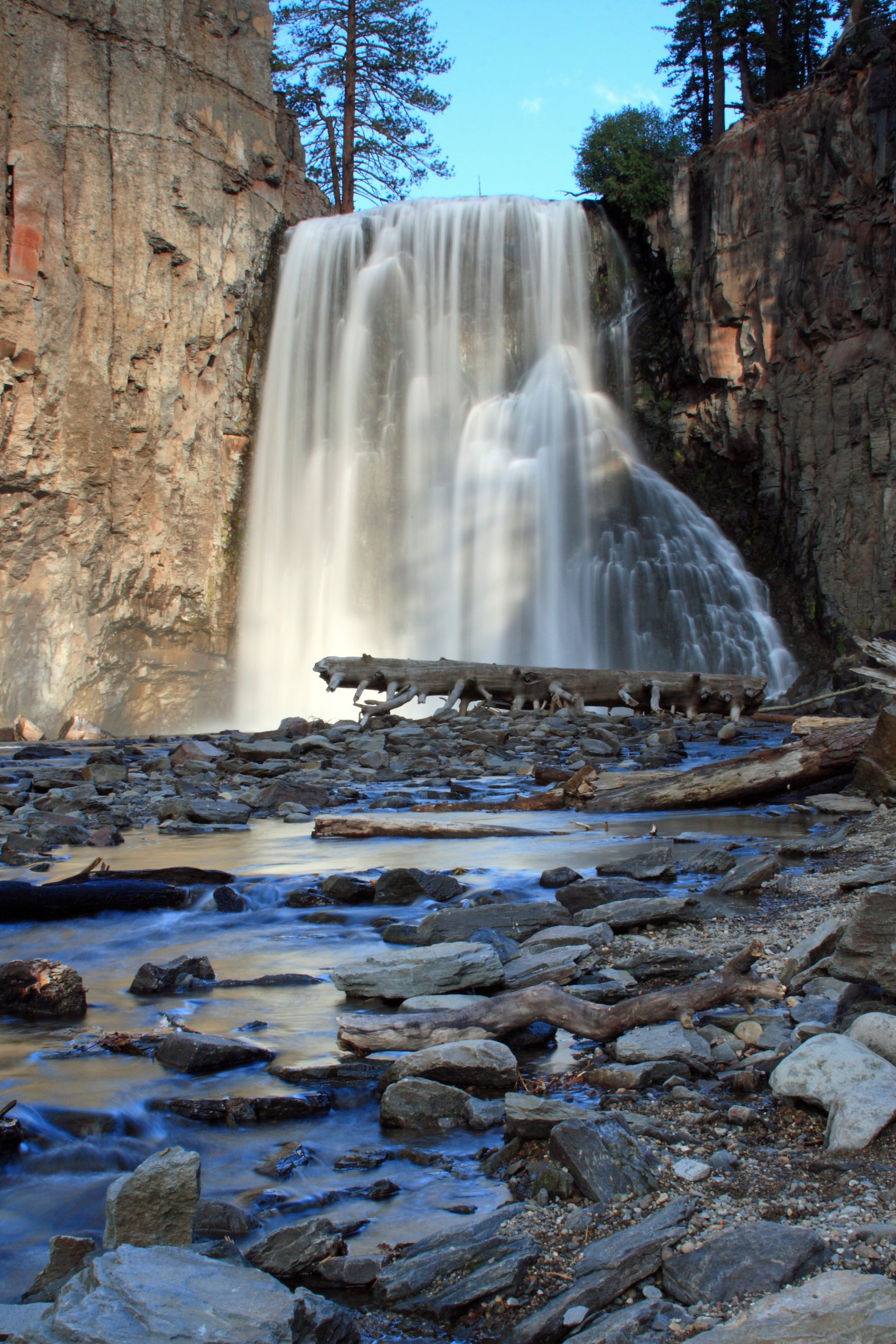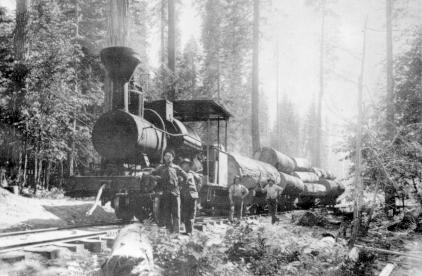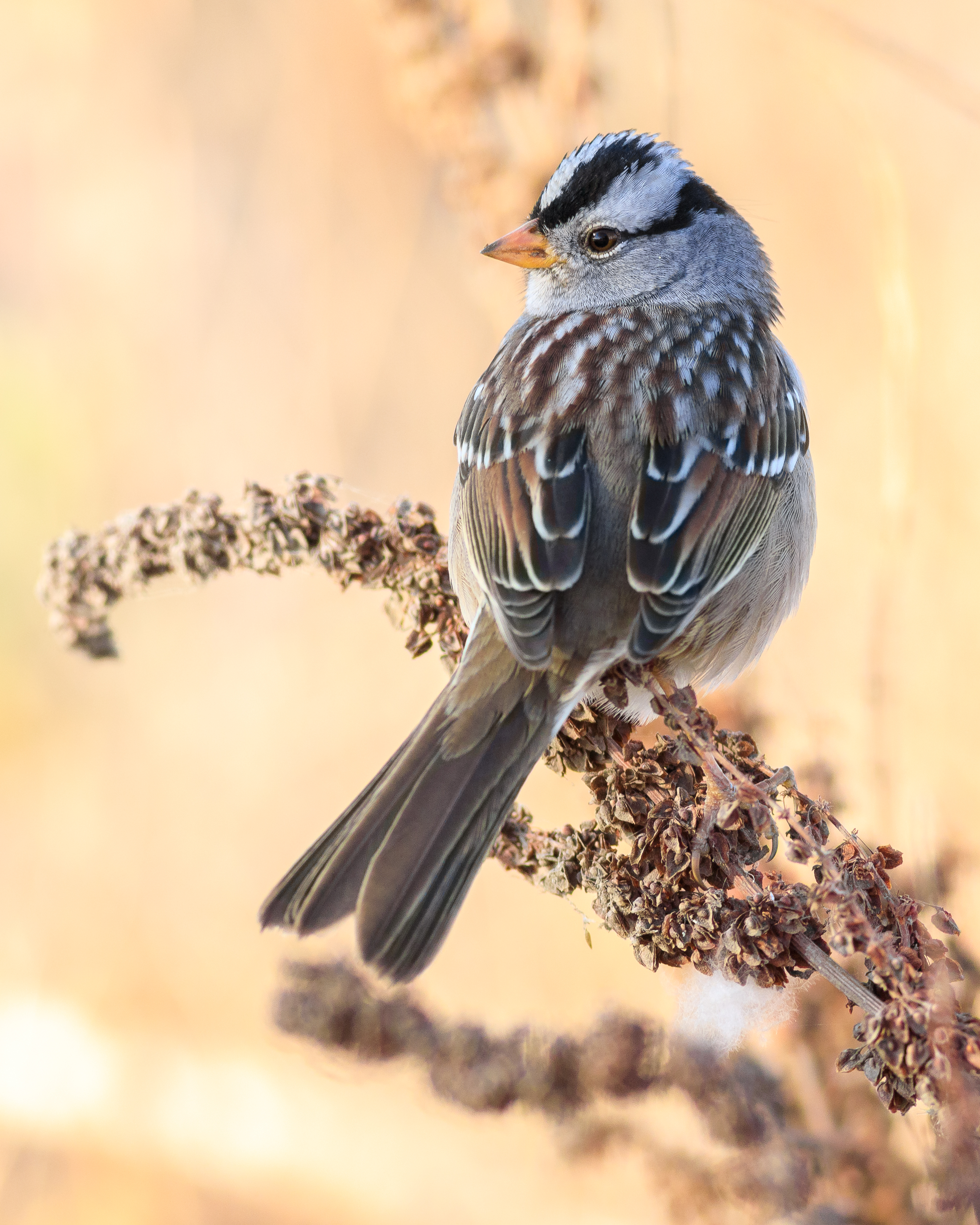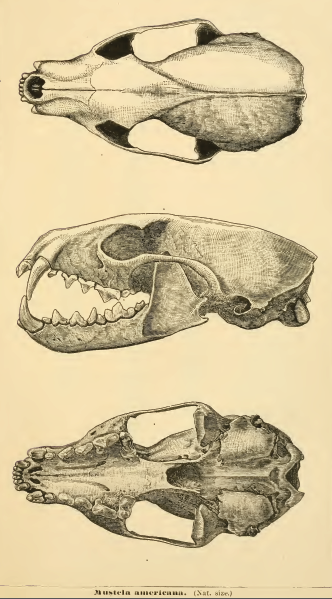|
Devil's Postpile National Monument
Devils Postpile National Monument is a U.S. National Monument located near Mammoth Mountain in Eastern California. The monument protects Devils Postpile, an unusual rock formation of columnar basalt, “all closely and perfectly fitted together like a vast mosaic.” The monument encompasses and includes two main attractions: the Devils Postpile formation and Rainbow Falls, a waterfall on the Middle Fork of the San Joaquin River. In addition, the John Muir Trail and Pacific Crest Trail merge into one trail as they pass through the monument. Excluding a small developed area containing the monument headquarters, visitor center and a campground, the National Monument lies within the borders of the Ansel Adams Wilderness. History The monument was established in 1911 as "Devil Postpile National Monument," (no possessive) but is widely referred to as Devils Postpile National Monument, and has been officially styled as plural without the apostrophe since the 1930s. An alternate hist ... [...More Info...] [...Related Items...] OR: [Wikipedia] [Google] [Baidu] |
Madera County, California
Madera County (), officially the County of Madera, is a county at the geographic center of the U.S. state of California. As of the 2020 census, the population was 156,255. The county seat is Madera. Madera County comprises the Madera, CA Metropolitan Statistical Area, which is included in the Fresno-Madera, CA Combined Statistical Area. It is located in the eastern San Joaquin Valley and the central Sierra Nevada. The southeasternmost part of Yosemite National Park is located in the county's northeast. History and etymology Madera County was formed in 1893 from Fresno County during a special election held in Fresno on May 16, 1893. Citizens residing in the area that was to become Madera County voted 1,179 to 358 for separation from Fresno County and the establishment of Madera County. Madera is the Spanish term for wood. The county derives its name from the town of Madera, named when the California Lumber Company built a log flume to carry lumber to the Central Pacific R ... [...More Info...] [...Related Items...] OR: [Wikipedia] [Google] [Baidu] |
John Muir
John Muir ( ; April 21, 1838December 24, 1914), also known as "John of the Mountains" and "Father of the National Parks", was an influential Scottish-American naturalist, author, environmental philosopher, botanist, zoologist, glaciologist, and early advocate for the preservation of wilderness in the United States of America. His letters, essays, and books describing his adventures in nature, especially in the Sierra Nevada, have been read by millions. His activism helped to preserve the Yosemite Valley and Sequoia National Park, and his example has served as an inspiration for the preservation of many other wilderness areas. The Sierra Club, which he co-founded, is a prominent American conservation organization. In his later life, Muir devoted most of his time to the preservation of the Western forests. As part of the campaign to make Yosemite a national park, Muir published two landmark articles on wilderness preservation in ''The Century Magazine'', "The Treasures o ... [...More Info...] [...Related Items...] OR: [Wikipedia] [Google] [Baidu] |
Aquilegia Formosa
''Aquilegia formosa'', the crimson columbine, western columbine, or (ambiguously) "red columbine", is a common wildflower native to western North America, from Alaska to Baja California, and eastward to Montana and Wyoming. Description ''Aquilegia formosa'' is a perennial herb that grows to 20–80 cm in height, averaging around 60 cm. Flowers, which can be seen from April to August (with some variation between regions), are about 5 cm long and red and yellow in color. The sepals and petal spurs are typically a reddish-orange color, attributed to the anthocyanin pigments pelargonidin and cyanidin, and carotenoids. Petal blades are yellow, pigmented by carotenoids. The primary pollinators are hummingbirds, although bees, butterflies, and flies will also visit flowers. Despite several floral adaptations to hummingbird pollination, at ~9,000-10,000 feet in elevation in the eastern drainages of the central Sierra Nevada mountains of California, ''A. formosa'' forms hyb ... [...More Info...] [...Related Items...] OR: [Wikipedia] [Google] [Baidu] |
White-crowned Sparrow
The white-crowned sparrow (''Zonotrichia leucophrys'') is a species of passerine bird native to North America. A medium-sized member of the New World sparrow family, this species is marked by a grey face and black and white streaking on the upper head. It breeds in brushy areas in the taiga and tundra of the northernmost parts of the continent and in the Rocky Mountains and Pacific coast. While southerly populations in the Rocky Mountains and coast are largely resident, the breeding populations of the northerly part of its range are bird migration, migratory and can be found as wintering or passage visitors through most of North America south to central Mexico. Etymology The scientific name is from Ancient Greek. The genus name ''Zonotrichia'' is from Ancient Greek (, ) and (, ). The species name ''leucophrys'' is from (, ) and (, ). Description Adults have black and white stripes on their head, a gray face, brown streaked upper parts and a long tail. The wings are brown ... [...More Info...] [...Related Items...] OR: [Wikipedia] [Google] [Baidu] |
Dark-eyed Junco
The dark-eyed junco (''Junco hyemalis'') is a species of junco, a group of small, grayish New World sparrows. This bird is common across much of temperate North America and in summer ranges far into the Arctic. It is a very variable species, much like the related fox sparrow (''Passerella iliaca''), and its systematics are still not completely untangled. Taxonomy The dark-eyed junco was formally described by the Swedish naturalist Carl Linnaeus in his landmark 1758 10th edition of ''Systema Naturae'' as ''Fringilla hyemalis''. The description consisted merely of the laconic remark "''F ingillanigra, ventre albo.'' ("A black ' finch' with white belly") and a statement that it came from America. Linnaeus based his description on the "Snow-Bird" that Mark Catesby had described and illustrated in his ''The Natural History of Carolina, Florida and the Bahama Islands''. The Bill of this Bird is white: The Breast and Belly white. All the rest of the Body black; but in some places dus ... [...More Info...] [...Related Items...] OR: [Wikipedia] [Google] [Baidu] |
Willow
Willows, also called sallows and osiers, from the genus ''Salix'', comprise around 400 speciesMabberley, D.J. 1997. The Plant Book, Cambridge University Press #2: Cambridge. of typically deciduous trees and shrubs, found primarily on moist soils in cold and temperate regions. Most species are known as willow, but some narrow-leaved shrub species are called osier, and some broader-leaved species are referred to as sallow (from Old English ''sealh'', related to the Latin word ''salix'', willow). Some willows (particularly arctic and alpine species) are low-growing or creeping shrubs; for example, the dwarf willow (''Salix herbacea'') rarely exceeds in height, though it spreads widely across the ground. Description Willows all have abundant watery bark sap, which is heavily charged with salicylic acid, soft, usually pliant, tough wood, slender branches, and large, fibrous, often stoloniferous roots. The roots are remarkable for their toughness, size, and tenacity to live, ... [...More Info...] [...Related Items...] OR: [Wikipedia] [Google] [Baidu] |
Alder
Alders are trees comprising the genus ''Alnus'' in the birch family Betulaceae. The genus comprises about 35 species of monoecious trees and shrubs, a few reaching a large size, distributed throughout the north temperate zone with a few species extending into Central America, as well as the northern and southern Andes. Description With a few exceptions, alders are deciduous, and the leaves are alternate, simple, and serrated. The flowers are catkins with elongate male catkins on the same plant as shorter female catkins, often before leaves appear; they are mainly wind-pollinated, but also visited by bees to a small extent. These trees differ from the birches (''Betula'', another genus in the family) in that the female catkins are woody and do not disintegrate at maturity, opening to release the seeds in a similar manner to many conifer cones. The largest species are red alder (''A. rubra'') on the west coast of North America, and black alder (''A. glutinosa''), native ... [...More Info...] [...Related Items...] OR: [Wikipedia] [Google] [Baidu] |
Black Cottonwood
''Populus trichocarpa'', the black cottonwood, western balsam-poplar or California poplar, is a deciduous broadleaf tree species native to western North America. It is used for timber, and is notable as a model organism in plant biology. Description It is a large tree, growing to a height of and a trunk diameter over , which makes it the largest poplar species in the Americas. It is normally fairly short-lived, but some trees may live up to 400 years. A cottonwood in Willamette Mission State Park near Salem, Oregon, holds the national and world records. Last measured in April 2008, this black cottonwood was found to be standing at tall, around, with 527 points. The bark is grey and covered with lenticels, becoming thick and deeply fissured on old trees. The bark can become hard enough to cause sparks when cut with a chainsaw.Ewing, Susan. The Great Alaska Nature Factbook. Portland: Alaska Northwest Books, 1996. The stem is grey in the older parts and light brown in y ... [...More Info...] [...Related Items...] OR: [Wikipedia] [Google] [Baidu] |
Quaking Aspen
''Populus tremuloides'' is a deciduous tree native to cooler areas of North America, one of several species referred to by the common name aspen. It is commonly called quaking aspen, trembling aspen, American aspen, mountain or golden aspen, trembling poplar, white poplar, and popple, as well as others. The trees have tall trunks, up to 25 meters (82 feet) tall, with smooth pale bark, scarred with black. The glossy green leaves, dull beneath, become golden to yellow, rarely red, in autumn. The species often propagates through its roots to form large clonal groves originating from a shared root system. These roots are not rhizomes, as new growth develops from adventitious buds on the parent root system (the ortet). ''Populus tremuloides'' is the most widely distributed tree in North America, being found from Canada to central Mexico. It is the defining species of the aspen parkland biome in the Prairie Provinces of Canada and extreme northwest Minnesota. Description Quaking ... [...More Info...] [...Related Items...] OR: [Wikipedia] [Google] [Baidu] |
Coyote
The coyote (''Canis latrans'') is a species of canine native to North America. It is smaller than its close relative, the wolf, and slightly smaller than the closely related eastern wolf and red wolf. It fills much of the same ecological niche as the golden jackal does in Eurasia. The coyote is larger and more predatory and was once referred to as the American jackal by a behavioral ecologist. Other historical names for the species include the prairie wolf and the brush wolf. The coyote is listed as least concern by the International Union for Conservation of Nature, due to its wide distribution and abundance throughout North America. The species is versatile, able to adapt to and expand into environments modified by humans. It is enlarging its range by moving into urban areas in the eastern U.S. and Canada. The coyote was sighted in eastern Panama (across the Panama Canal from their home range) for the first time in 2013. The coyote has 19 recognized subspecies. The average ... [...More Info...] [...Related Items...] OR: [Wikipedia] [Google] [Baidu] |
Mule Deer
The mule deer (''Odocoileus hemionus'') is a deer indigenous to western North America; it is named for its ears, which are large like those of the mule. Two subspecies of mule deer are grouped into the black-tailed deer. Unlike the related white-tailed deer (''Odocoileus virginianus''), which is found throughout most of North America east of the Rocky Mountains and in the valleys of the Rocky Mountains from Idaho and Wyoming northward, mule deer are only found on the western Great Plains, in the Rocky Mountains, in the southwest United States, and on the west coast of North America. Mule deer have also been introduced to Argentina and Kauai, Hawaii. Taxonomy Mule deer can be divided into two main groups: the mule deer (''sensu stricto'') and the black-tailed deer. The first group includes all subspecies, except ''O. h. columbianus'' and '' O. h. sitkensis'', which are in the black-tailed deer group. The two main groups have been treated as separate species, but they hybridiz ... [...More Info...] [...Related Items...] OR: [Wikipedia] [Google] [Baidu] |
American Marten
The American marten (''Martes americana''), also known as the American pine marten, is a species of North American mammal, a member of the family Mustelidae. The species is sometimes referred to as simply the pine marten. The name "pine marten" is derived from the common name of the distinct Eurasian species, ''Martes martes''. It is found throughout Canada, Alaska, and parts of the northern United States. It is a long, slender-bodied weasel, with fur ranging from yellowish to brown to near black. It may be confused with the fisher (''Pekania pennanti''), but the marten is lighter in color and smaller. Identification of the marten is further eased by a characteristic bib that is a distinctly different color than the body. Sexual dimorphism is pronounced, with males being much larger. The diet is omnivorous and varies by season, but relies chiefly on small mammals like voles. They are solitary except during the mid-summer breeding season. Embryonic implantation is delayed until l ... [...More Info...] [...Related Items...] OR: [Wikipedia] [Google] [Baidu] |




.jpg)





